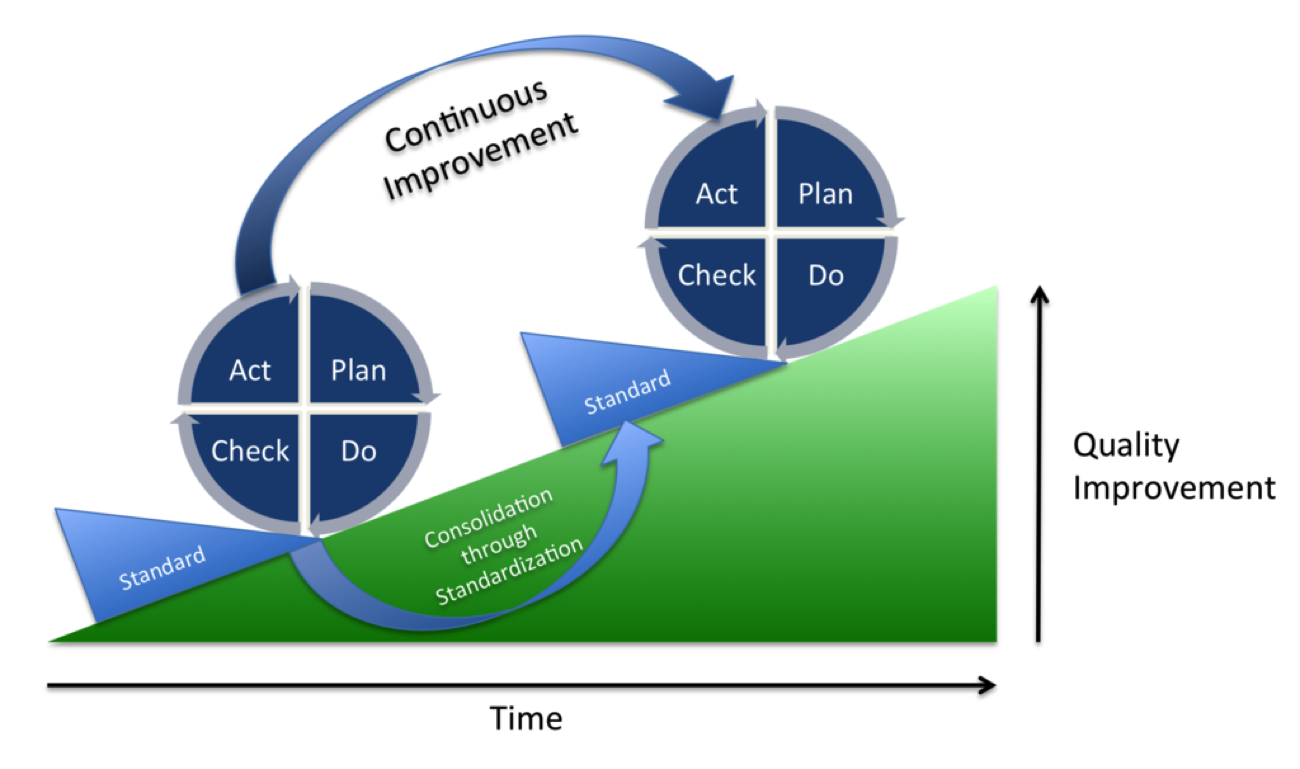Even with all the tools provided by the continuous improvement methodology, whether they be SPC charts, analytical techniques, or specialized efficiency practices, the most important variable in the success of a continuous improvement initiative will always be your workers. Having production employees on board is what makes a continuous improvement culture-shift work, and without their enthusiasm and expertise it will surely flounder.
This is why when implementing continuous improvement practices in your company it is vital to create Self-Directed Work Teams (SDWTs). While the exact structure of the work team can vary form company to company, the basic premise is giving floor workers the chance to help solve the problems that directly affect them. The current industry standard structure for SDWTs is to have two levels: Corrective Action Teams, and Workplace Improvement Teams.
Corrective Action Teams
Corrective Action Teams work to fix problems identified by a customer, by management, or by a Workplace Improvement Team. This type of team has far more oversight than a Workplace Improvement Team, and has a shorter timeframe for existence. A manager selects a team leader, who then assembles a team to fix a very specific problem. The team members should be selected from workers in the problem area, and they work only until the problem is fixed. After that, the group is disbanded, and the workers return to their stations.
This is a great approach to implementing continuous improvement in your company because it really involves low-level employees in the process, increasing their commitment to it. Additionally, employees are more likely to uphold procedures that they had a hand in writing. It’s important to note that Corrective Action Teams on their own are not enough to convert the whole company to the continuous improvement vision. They do, however, give floor workers a chance to see the company from a different, wider perspective. This new view of the company on the large scale can help them better understand their role in the small scale, and create better ideas for improving efficiency.
Workplace Improvement Teams
A Workplace Improvement Team functions in a vastly different way from a Corrective Action Team, in that they require far less oversight, and are more freeform in their goals. The teams consist of specially chosen and trained individuals, often ones who excelled in Corrective Action Teams. These individuals are then able to select problems independently, and meet regularly to solve them. This team still focusses on individual problems, but unlike Corrective Action Teams, a Workplace Improvement Team can be more ambitious in the scale of their projects.
Another defining characteristic of a Workplace Improvement Team is its potential to disrupt traditional hierarchies within the company. A highly competent team can be given progressively more responsibility and training, allowing them to become a very influential force. With numerous Workplace Improvement Teams active in different parts of the supply chain, backed up by Corrective Action Teams, the interconnected web of continuous improvement can spread quickly throughout a factory, and your company as a whole.
Worximity is deeply committed to the philosophies of Continuous Improvement and Lean Manufacturing in food manufacturing. Using our IoT technology we provide company wide visibility into the statistics that matter to manufacturers and accelerate TTV (Time to Value) of investments in company culture and training to achieve outstanding productivity.
















